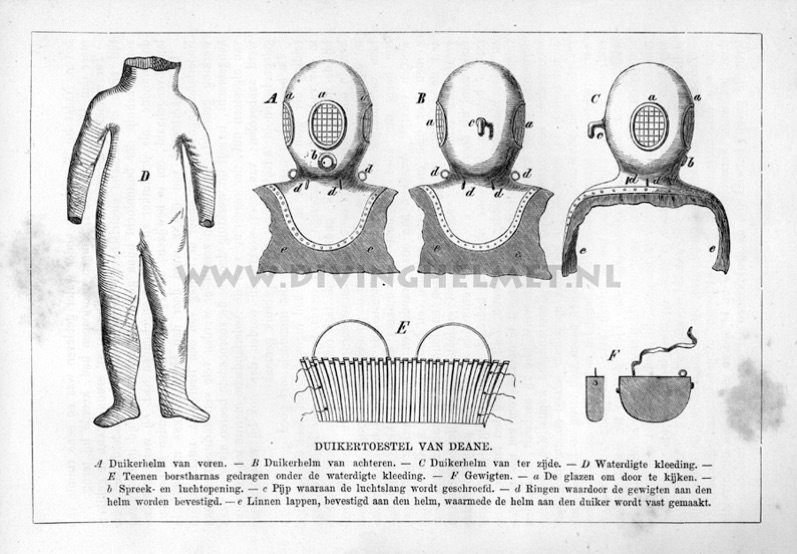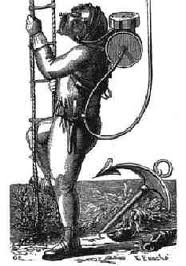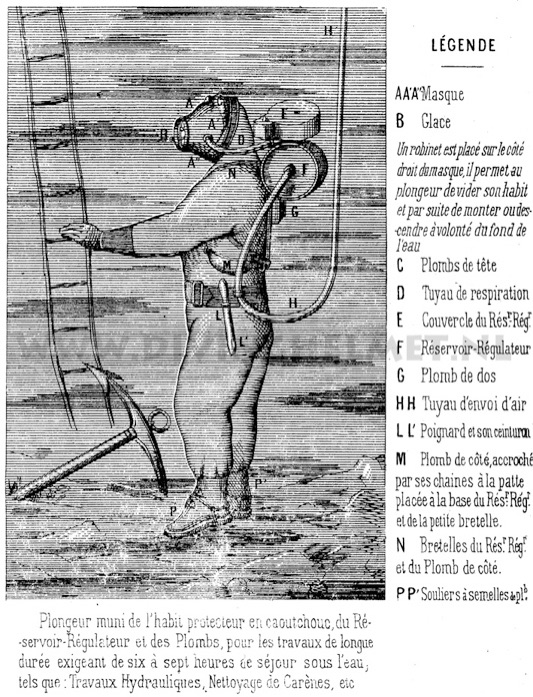"Later Deane went off with the sweepers (men who go sweeping for anchors and chains which are lost by ships). When they came fast to an anchor, he could go down in his diving dress, the men on the deck pumping air to him. He would then make fast a chain, and they would heave up the anchor. He then went out to a wreck and sent up several things that had lain there for years." - John Bevan, 1828
War
The H.L. Hunley
The H.L Hunley was a confederate submarine and the first to sink a ship that implemented the spar torpedo, which has to be rammed into the ship to make the torpedo explode.
"[The H.L. Hunley] is about 35 feet long; height about same as "David" (5½ feet); has propellers at the end; she is not driven by steam, but her propeller is turned by hand. Has two manholes on the upper side, about 12 to 14 feet apart. The entrance into her is through these manholes, the covers being turned back. They are all used to look out of." - Rear-Admiral Dahlgren, Jan 7, 1864
"[The] U. S. S. Housatonic, on the blockade off Charleston, S. C., was torpedoed by a rebel "David" [H. L. Hunley] and sunk on the night of the 17th February about 9 o'clock." - Rear-Admiral Dahlgren, Feb 19, 1864
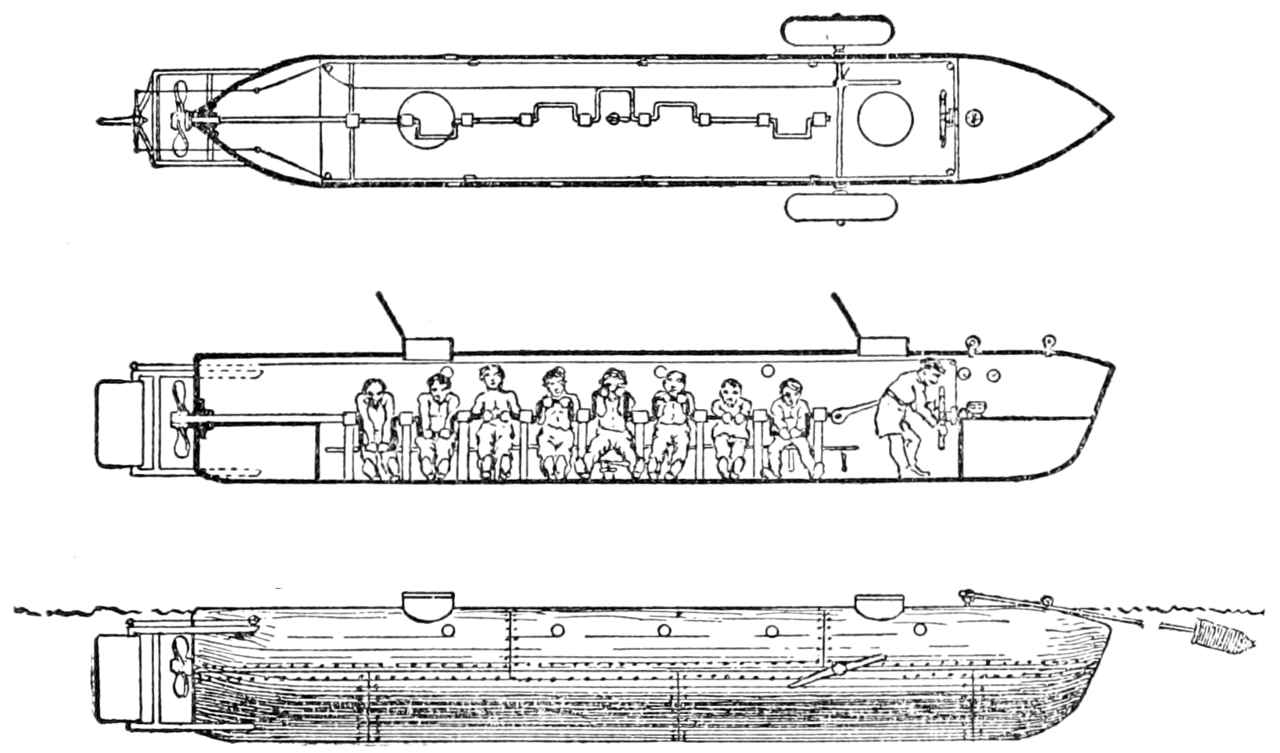
Confederate submarine which sank the Housatonic, 1900 and 1901,
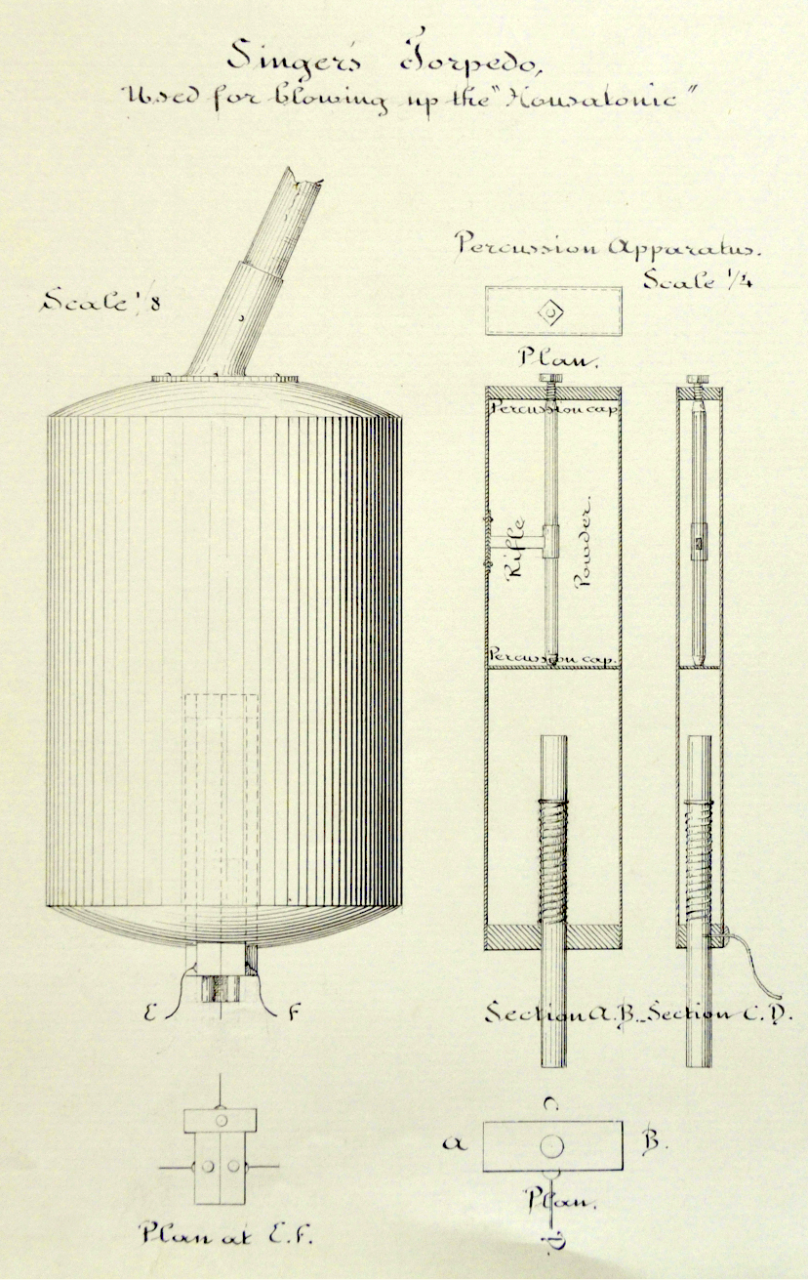
"Singer Torpedo Designed for H.L Hunley", Quincy Adams Gallimore, 1864
"The officer of the deck perceived a moving object on the water quite near and ordered the chain to be slipped; the captain and executive officer went on deck, saw the object, and each fired at it with a small arm. In an instant the ship was struck on the starboard side, between the main and mizzen masts; those on deck near were stunned, the vessel begun to sink, and went down almost immediately. " (Report of Rear-Admiral Dahlgren, U.S. Navy, commanding the South Atlantic Blockading Squadron, FLAG-STEAMER PHILADELPHIA, Port Royal Harbor, S. C., February 19, 1864.)
